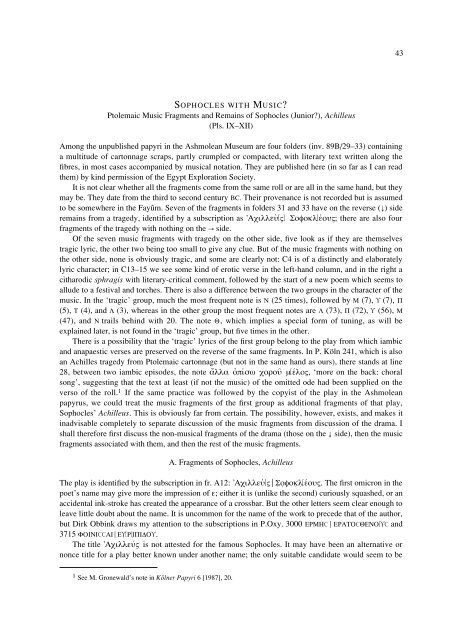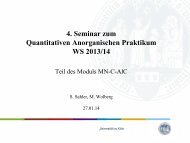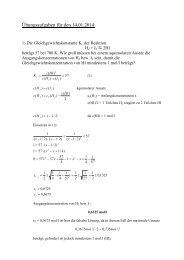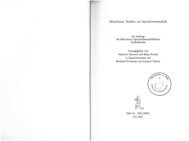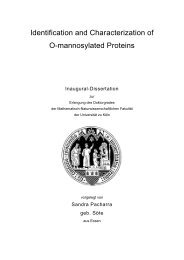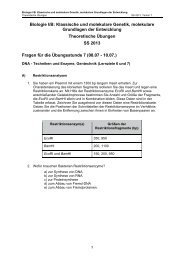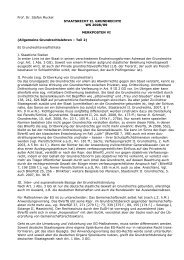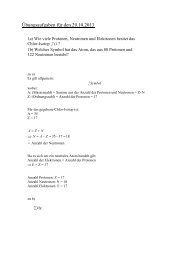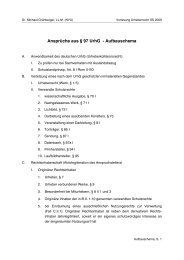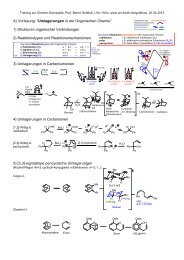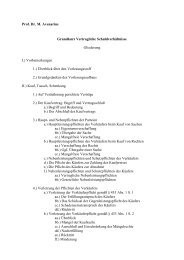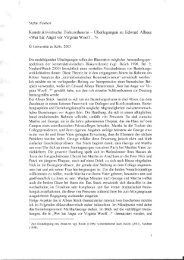Ptolemaic Music Fragments and Remains of Sophocles (Junior ...
Ptolemaic Music Fragments and Remains of Sophocles (Junior ...
Ptolemaic Music Fragments and Remains of Sophocles (Junior ...
Create successful ePaper yourself
Turn your PDF publications into a flip-book with our unique Google optimized e-Paper software.
SOPHOCLES WITH MUSIC?<br />
<strong>Ptolemaic</strong> <strong>Music</strong> <strong>Fragments</strong> <strong>and</strong> <strong>Remains</strong> <strong>of</strong> <strong>Sophocles</strong> (<strong>Junior</strong>?), Achilleus<br />
(Pls. IX–XII)<br />
Among the unpublished papyri in the Ashmolean Museum are four folders (inv. 89B/29–33) containing<br />
a multitude <strong>of</strong> cartonnage scraps, partly crumpled or compacted, with literary text written along the<br />
fibres, in most cases accompanied by musical notation. They are published here (in so far as I can read<br />
them) by kind permission <strong>of</strong> the Egypt Exploration Society.<br />
It is not clear whether all the fragments come from the same roll or are all in the same h<strong>and</strong>, but they<br />
may be. They date from the third to second century BC. Their provenance is not recorded but is assumed<br />
to be somewhere in the Fayûm. Seven <strong>of</strong> the fragments in folders 31 <strong>and</strong> 33 have on the reverse (↓) side<br />
remains from a tragedy, identified by a subscription as ∆Acilleu;ª"º S<strong>of</strong>oklªevou"; there are also four<br />
fragments <strong>of</strong> the tragedy with nothing on the → side.<br />
Of the seven music fragments with tragedy on the other side, five look as if they are themselves<br />
tragic lyric, the other two being too small to give any clue. But <strong>of</strong> the music fragments with nothing on<br />
the other side, none is obviously tragic, <strong>and</strong> some are clearly not: C4 is <strong>of</strong> a distinctly <strong>and</strong> elaborately<br />
lyric character; in C13–15 we see some kind <strong>of</strong> erotic verse in the left-h<strong>and</strong> column, <strong>and</strong> in the right a<br />
citharodic sphragis with literary-critical comment, followed by the start <strong>of</strong> a new poem which seems to<br />
allude to a festival <strong>and</strong> torches. There is also a difference between the two groups in the character <strong>of</strong> the<br />
music. In the ‘tragic’ group, much the most frequent note is N (25 times), followed by M (7), U (7), P<br />
(5), T (4), <strong>and</strong> L (3), whereas in the other group the most frequent notes are L (73), P (72), U (56), M<br />
(47), <strong>and</strong> N trails behind with 20. The note Q, which implies a special form <strong>of</strong> tuning, as will be<br />
explained later, is not found in the ‘tragic’ group, but five times in the other.<br />
There is a possibility that the ‘tragic’ lyrics <strong>of</strong> the first group belong to the play from which iambic<br />
<strong>and</strong> anapaestic verses are preserved on the reverse <strong>of</strong> the same fragments. In P. Köln 241, which is also<br />
an Achilles tragedy from <strong>Ptolemaic</strong> cartonnage (but not in the same h<strong>and</strong> as ours), there st<strong>and</strong>s at line<br />
28, between two iambic episodes, the note a[lla ojpivsw corou' mªevlo", ‘more on the back: choral<br />
song’, suggesting that the text at least (if not the music) <strong>of</strong> the omitted ode had been supplied on the<br />
verso <strong>of</strong> the roll. 1 If the same practice was followed by the copyist <strong>of</strong> the play in the Ashmolean<br />
papyrus, we could treat the music fragments <strong>of</strong> the first group as additional fragments <strong>of</strong> that play,<br />
<strong>Sophocles</strong>’ Achilleus. This is obviously far from certain. The possibility, however, exists, <strong>and</strong> makes it<br />
inadvisable completely to separate discussion <strong>of</strong> the music fragments from discussion <strong>of</strong> the drama. I<br />
shall therefore first discuss the non-musical fragments <strong>of</strong> the drama (those on the ↓ side), then the music<br />
fragments associated with them, <strong>and</strong> then the rest <strong>of</strong> the music fragments.<br />
A. <strong>Fragments</strong> <strong>of</strong> <strong>Sophocles</strong>, Achilleus<br />
The play is identified by the subscription in fr. A12: ∆Acilleu;ª" ⁄ S≥o≥f≥ok≥l≥ªevou". The first omicron in the<br />
poet’s name may give more the impression <strong>of</strong> e; either it is (unlike the second) curiously squashed, or an<br />
accidental ink-stroke has created the appearance <strong>of</strong> a crossbar. But the other letters seem clear enough to<br />
leave little doubt about the name. It is uncommon for the name <strong>of</strong> the work to precede that <strong>of</strong> the author,<br />
but Dirk Obbink draws my attention to the subscriptions in P.Oxy. 3000 ERMHÇ ⁄ ERATOÇQENOªUÇ <strong>and</strong><br />
3715 FOINIÇÇAI ⁄ EU≥ªRºI≥PIDOU.<br />
The title ∆Acilleuv" is not attested for the famous <strong>Sophocles</strong>. It may have been an alternative or<br />
nonce title for a play better known under another name; the only suitable c<strong>and</strong>idate would seem to be<br />
1 See M. Gronewald’s note in Kölner Papyri 6 [1987], 20.<br />
43


